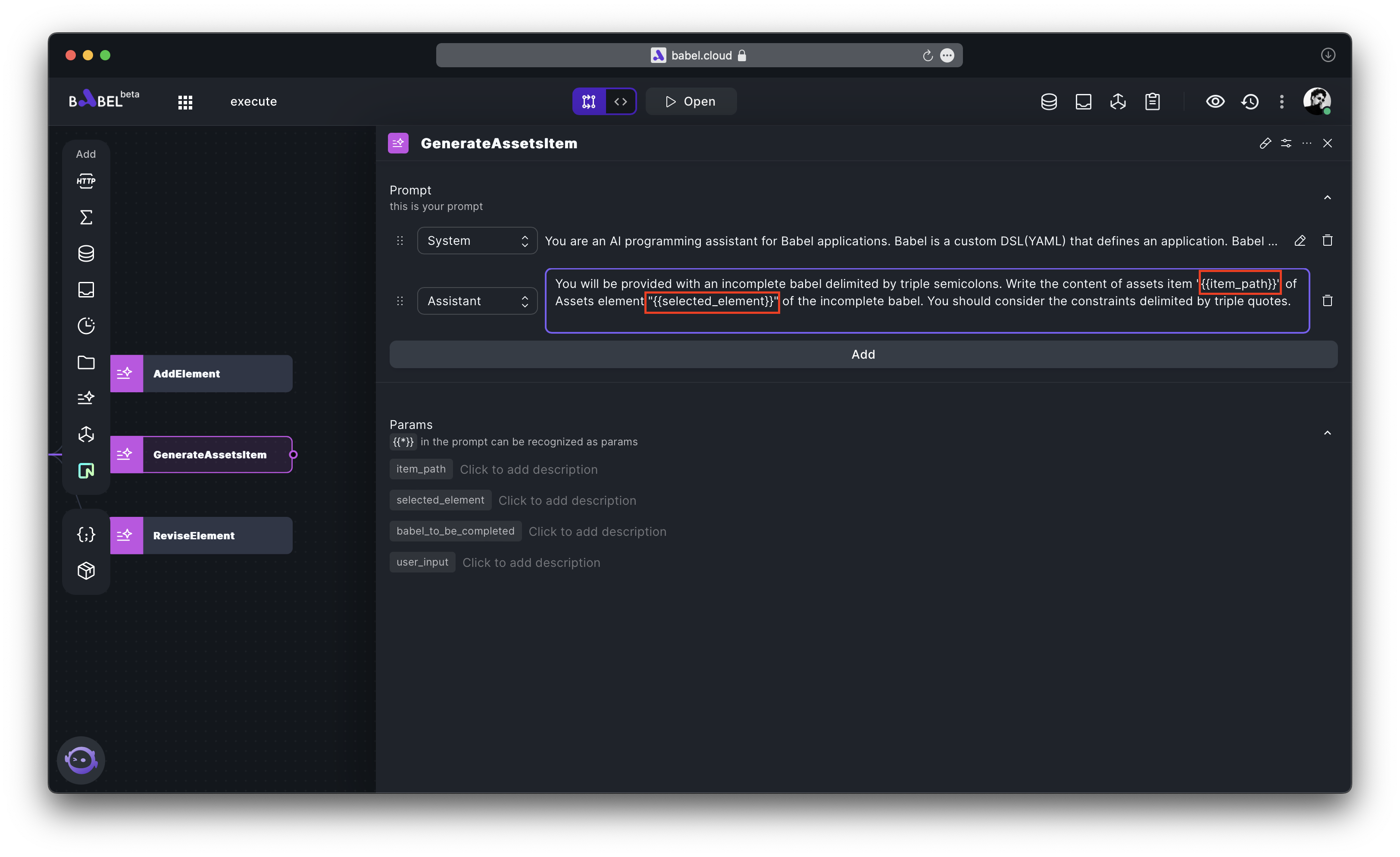execute
The execute method prioritizes filling in the variables in the "Prompt", then forwards it to the large AI model for processing.
async execute(
input: Record<string, string>,
parameters?: {
temperature?: number;
topP?: number;
stop?:
| []
| [string]
| [string, string]
| [string, string, string]
| [string, string, string, string];
maxTokens?: number;
presencePenalty?: number;
frequencyPenalty?: number;
}
): Promise<string>;
Reference
Overview
Assume your LLMExecutor is configured as shown in the following diagram.

You can utilize it in the following manner.
import { myLLMExecutor } from "#elements";
...
const input = {
"item_path": "the_value_of_your_actual_variable",
"selected_element": "the_value_of_your_actual_variable",
"babel_to_be_completed": "the_value_of_your_actual_variable",
"user_input": "the_value_of_your_actual_variable",
};
const result: string = await myLLMExecutor.execute(input);
console.log(result);
...
Parameters
input: Key-value mapping of "Params".parameters: Optional parameters, containing the following fields:temperature: (optional) What sampling temperature to use, between 0 and 2. Higher values like 0.8 will make the output more random, while lower values like 0.2 will make it more focused and deterministic.topP: (optional) An alternative to sampling with temperature, called nucleus sampling, where the model considers the results of the tokens with top_p probability mass. So 0.1 means only the tokens comprising the top 10% probability mass are considered.stop: (optional) Up to 4 sequences where the API will stop generating further tokens. The returned text will not contain the stop sequence.maxTokens: (optional) The maximum number of tokens to generate in the completion. The token count of your prompt plus max tokens cannot exceed the model's context length.presencePenalty: (optional) Number between -2.0 and 2.0. Positive values penalize new tokens based on whether they appear in the text so far, increasing the model's likelihood to talk about new topics.frequencyPenalty: (optional) Number between -2.0 and 2.0. Positive values penalize new tokens based on their existing frequency in the text so far, decreasing the model's likelihood to repeat the same line verbatim.
Returns
The execute method return a string value